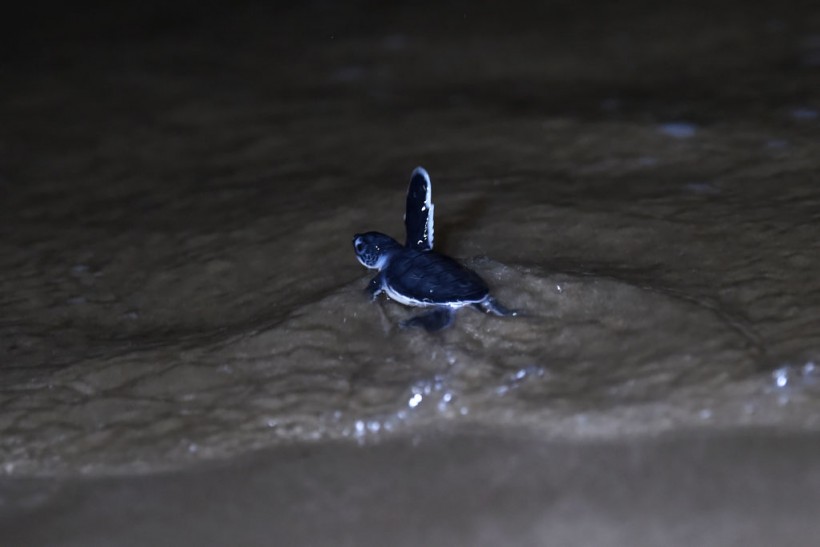Experts said that misidentified fossils dating to 132 and 113 million years ago were found to be baby marine turtles.
Through re-examination of the fossils, researchers discovered that what were taken to be veins of leaves are actually bone growth patterns.

Identifying Fossil Specimens
The fossils, which were unearthed in rocks dating to between 132 and 113 million years ago, were discovered in Colombia in the middle of the 20th century by Padre Gustavo Huerta.
Experts said that correctly identifying fossil specimens from parautochtonous deposits where marine and terrestrial organisms co-occur can be challenging due to the abundance of rare and obscure specimens with unclear morphologies.
In this study, researchers have reviewed fossils from the Lower Cretaceous La Paja Formation (Ricaurte Alto, Villa de Leyva, Colombia) that were originally described as the plant Sphenophyllum colombianum based on an apparent resemblance to the upper Paleozoic genus.
They determined that the type specimen corresponds to the carapace of a hatchling turtle.
In addition to that, a second specimen of S. colombianum although less well-preserved, also exhibits similar features of a hatchling turtle.
Read Also: Baby Sea Turtles: Why Only 1 Out of 1,000 Turtles Survive to Adulthood?
Hatchlings Of Marine Turtles
Scientists said that the two fossil specimens are significant as they represent the first report of hatchling marine turtles from the Aptian of northwestern South America and provide evidence of the exceptional preservation of the Marine Reptile Lagerstätte of Ricaurte Alto.
They noted that LaPaja Formation has yielded an enormous quantity and diversity of exceptionally preserved Hauterivian to Aptian fossils.
These fossils include a large number of marine reptiles, such as plesiosaurs, pliosaurs, ichthyosaurs, turtles, crocodylomorphs, and dinosaurs.
Marine invertebrates are also widespread in the sedimentary sequence, particularly ammonoids.
The unexpected discovery of a species of Sphenophyllum in the La Paja Formation represented a conundrum: either this Paleozoic genus extended into the Early Cretaceous or the affinity of S. colombianum is incorrect.
Upon close examination, the specimens of Sphenophyllum colombianum do not represent a fossil plant but rather the remains of carapaces of hatchling marine turtles.
The specimen MONQ-602 corresponded to a partially preserved, small carapace in ventral view, missing all the peripherals, the anteromedial portion of the nuchal, the suprapygal 2, and the pygal. It preserved at least seven neural bones, seven costal bones, suprapygal 1, and the most posterior portion of the nuchal.
Scientists said that the sutural contact between these bones is serrated, however, many of the neural and costal sutural contacts can only be inferred, especially those involving the posterior neurals after neural.
The study noted that the specimens from La Paja Formation resemble hatchlings and juveniles of both extant and extinct marine turtles in many aspects, including a relatively poor ossification, highly serrated sutural contacts between bones, and the presence of fontanelles.
''We can exclude the possibility that they belong to pleurodirans (side-necked turtles) due to the lack of evidence of an iliac scar on the posterior costal bones, which suggests that the illium was not fused to the carapace,'' researchers said.
The said work aims to promote future collaborative work between different paleontological disciplines, such as paleobotany and vertebrate paleontology, to prevent taxonomical misidentifications, especially when dealing with fossils that are partially complete or pose specific identification challenges.
Related Article: Disturbing Imbalance: Most Baby Sea Turtles Are Turning Females Due to Climate Change
© 2024 NatureWorldNews.com All rights reserved. Do not reproduce without permission.

![Tsunami Hazard Zones: New US Map Shows Places at Risk of Flooding and Tsunamis Amid Rising Sea Levels [NOAA]](https://1471793142.rsc.cdn77.org/data/thumbs/full/70325/280/157/50/40/tsunami-hazard-zones-new-us-map-shows-places-at-risk-of-flooding-and-tsunamis-amid-rising-sea-levels-noaa.jpg)



